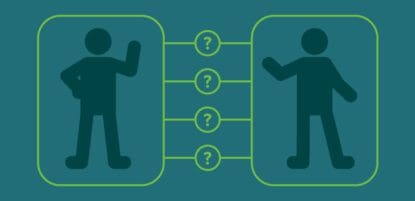Today’s CFO must ensure the finance team operates at peak performance. While peak performance varies, CFOs must have an eye toward lowering costs, increasing speed, and reducing bottlenecks in the system. Competing priorities and busy teams make it difficult for CFOs to know which initiatives will move the needle.
An APQC study found that average performers manually key 58% of invoices into their financial system, while top performers only manually key in 42%. Looking at data-entry alone, there is clearly an opportunity to improve the invoice-to-pay cycle.
A recent eBook by CFO.com, What CFOs Need To Know About AP Automation, explores key issues that CFOs need to consider when revamping the invoice-to-pay process – each of which I will breakdown below.
Pain Points and Current Bottlenecks
Organizations need to understand where they stand in terms of AP productivity. Overdue payments and missed discounts are major pain points, and manual routing of invoices is to blame. Lack of visibility is a direct result of a manual accounts payable process.
Best Practices for Streamlining AP
Finance chiefs need to develop strategies for improving AP once roadblocks are identified. Invoice capture is an important component that eliminates paper and converts invoice to searchable PDFs. Departments need to map the invoice-to-pay process from beginning to end and agree on an optimal workflow.
Benefits of Moving AP Spend onto Cards
An overall goal of reducing paper means that CFOs need to consider moving away from checks. Virtual cards help optimize cash flow, mitigate risk, earn rebates, and secure early pay discounts. Additionally, virtual cards limit the dollar amount and categories of spending. Virtual cards provide greater visibility and enables users to earn cash back.
Better Relationships with Vendors
AP Automation can ensure suppliers are being paid based on the terms of their agreements when invoice data is captured and digitized. Suppliers can be automatically alerted during the invoice-to-pay process so that they know when to expect payment and can address any problems, such as faulty product or non-delivery, early in the cycle. This results in fewer back-and-forth phone calls and emails when there is an issue, easing the strain on the resources of the vendor and the customer.
Cohesive Approach to Invoice-to-Pay
Modern CFOs are seeking the tools and strategies to propel the invoice-to-pay process into a value-added function rather than a drain on resources. Automating the standard steps in the AP process, such as invoice and payment approvals, will reduce errors and free up staff.
When done well, accounts payable can provide a strategic advantage as suppliers want to work with companies that have a well-managed process for procurement and payment. Looking ahead, companies will leverage the data and analysis that is fueled by automating the process.
Download the entire eBook here.



